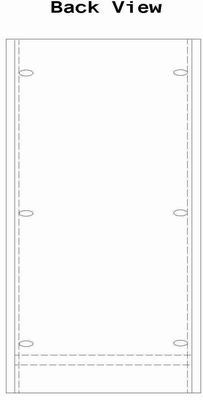Waiting Period Before Sanding Doors after Glue-Up
Wood porosity and moisture content can influence the time needed for a cure in PVA glued joints before sanding a door. October 16, 2013
Question
(WOODWEB Member) :
We produce several doors a day with a mix of about 48% hard maple, 45% cherry and the rest broken out between oak, hickory and alder. We preassemble the doors and clamp them in a rotating JLT clamp setup and the doors are clamped for about 8 minutes. The problem we are having is that once the cherry and oak doors are removed, we have to sit them on the floor for an additional 10 minutes before running through our Timesaver. The hard maple doors are placed immediately on a conveyor that runs them through the wide belt and we have no problem with them. We currently use a PVA glue. Any ideas why?
Forum Responses
(Adhesive Forum)
From Jeff Pitcher, forum technical advisor:
I'm surprised you're not loading up your belts with uncured PVA. 8 minutes is really pushing the limits of even the fastest PVAs. What happens to the oak and cherry doors if you don't allow them to sit for the additional time? I'd be curious to know what the glue line looks like on your doors after you run them through the Timesaver. Do you get any wood failure if you break the joint?
From the original questioner:
The doors are either cope and stick or mitre and it is only in the joint where we get glue squeeze out. This does load the front pinch roller, and we have to clean it often. What happens is the joint is loose and can be pulled apart easily with no wood failure.
From Jeff Pitcher, forum technical advisor:
It sounds like you're just not getting enough cure before you put the pieces through the Timesaver. I don't know why you'd see a difference on the hard maple. Cure rates will vary by species depending on porosity. Generally, hard maple is more difficult to glue than either oak or cherry. Do you have more squeeze out on the hard maple by any chance?
From contributor L:
What PVA glue are you using? I usually let mine sit in the clamps for 45-60 minute. 8 minutes seems like you are chancing failure. Ever thought about investing in a wood welder RF glue drying equipment?
From Professor Gene Wengert, Sawing and Drying Forum technical advisor:
Cure rate does vary slightly with moisture content, so perhaps the maple is a bit drier. Even so, the joint integrity will suffer now and then if sent through the TimeSaver too soon, so you would be better off to wait quite a bit longer for all.
